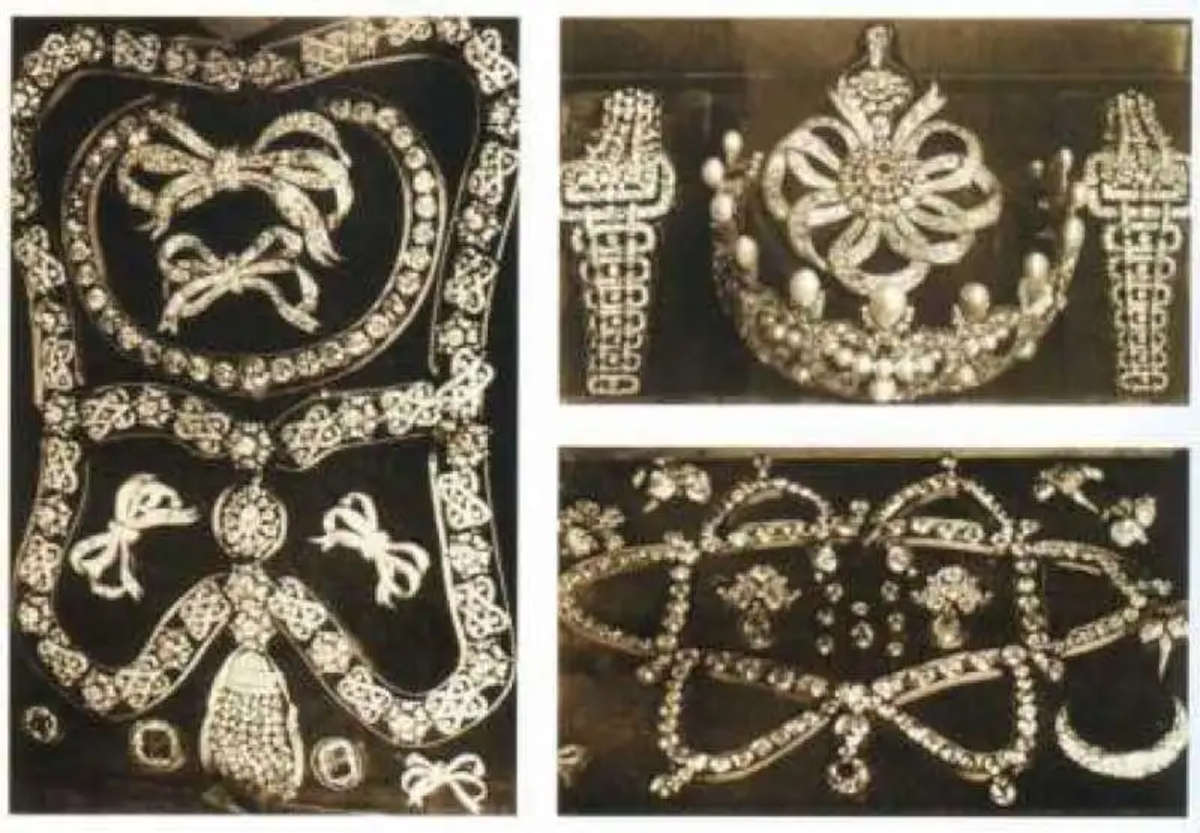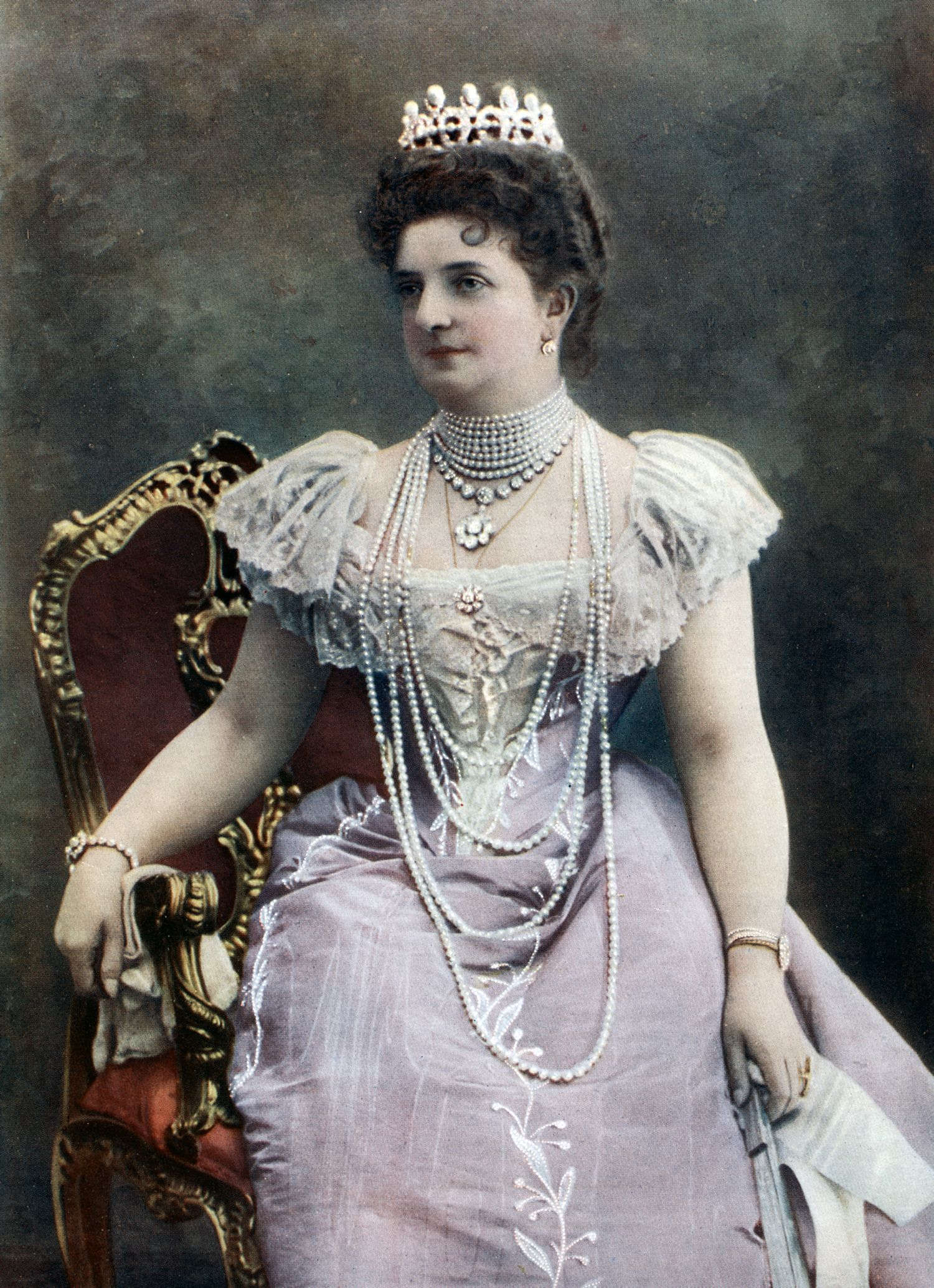A treasure chest of jewels of queens and princesses whose dazzling beauty is fabled, works of art by goldsmiths from halfway across Europe, which has been admired only once since 1946. We are talking about the crown jewels of the House of Savoy: something like two thousand pearls and 6732 diamonds for two thousand carats, sapphires, emeralds and rubies mounted on necklaces, tiaras, tiaras, brooches and rings, kept in the vault of the Bank of Italy on whose fate hangs the judgment of History. Eighty years later, the heirs of the last king of Italy Umberto II are demanding its return.
It was five o’clock in the afternoon of June 5, 1946, the hours that followed the proclamation of the results on the June 2, 1946 referendum by which Italians chose to end with the monarchy (and the Savoy family, which will be exiled) and become a Republic. The royal family is packing, there is uncertainty over an indecipherable fate that may befall them, but there is a rush. One cannot bring as much as one would like, the king instructs the minister of the Royal Household, Falcone Lucifero, to take the Crown Jewels and bring them to safety by handing them over to Bank of Italy Governor Luigi Einaudi. In the record of delivery that was drawn up on 12 lire stamp paper is written, “The year of 1946, June 5, at 5 p.m. in the premises of the Bank of Italy, Via Nazionale n.91, Mr. Lawyer Falcone Lucifero, in his capacity as regent of the Ministry of the Royal House with the assistance of Grand Officer Livio Annesi chief director of the Accountancy of the aforementioned Ministry, appeared. Lawyer Falcone Lucifero declares that he has been instructed by His Majesty King Umberto II to entrust to the custody of the central cashier of the Bank of Italy to be kept at the disposal of those entitled to the precious objects representing the so-called ’endowment jewels of the Crown of the Kingdom,’ which are described in the inventory kept at the Ministry of the Royal House and which are transcribed below.” The king wished to hand them over to the governor of the Bank of Italy, justifying the intention with the desire that “they not immediately go into the hands of a commissioner who might take hasty measures and perhaps make a distribution and allocation not in accordance with the historical value.” And great indeed would be the historical value that accompanied these precious objects.
Luigi Einaudi, who was later to become the first President of the Republic, in his diaries (Paolo Soddu, Luigi Einaudi, diary 1945-1947, in Collana storica della Banca d’Italia, p. 23), recalls the moment of delivery thus: they are “enclosed in a three-tiered chest. These are the jewels (...) carried by the queens and princesses of the House of Savoy. There is the famous diadem of Queen Margaret, augmented and carried later by Queen Helena (...). These are in each case jewels which have had a special history in the affairs of the House. He (King Umberto II, ed.) wishes them to be deposited with the Bank of Italy to be handed over later to the rightful owner. My impression is that he demonstrates a great deal of scruple, inasmuch as that it could be held that the jewels belong not to the state property, but to the royal family.”
The question is open decades later, despite the fact that about the fate of the wealth of the royal house there would seem to be no doubt given the provisions of the Thirteenth Final and Transitory Provision of the Constitution, which came into force in 1948: “The property, existing in the national territory, of the former kings of the House of Savoy, their consorts and their male descendants, are avocati to the State. Transfers and constitutions of rights in rem over the same property, which took place after June 2, 1946, are null and void.” A full-fledged confiscation fell on the entire patrimony of the Savoy family (the Quirinal Palace, now the seat of the Presidency of the Republic, was the royal palace), but no one ever laid a hand on that coffer, no government ever instructed the Bank of Italy about opening oruse of what was contained therein, and in 2022 the king’s heirs went to court to have it returned (the heirs of King Umberto II have filed an action in the Civil Court of Rome against the Prime Minister’s Office, the Ministry of Economy and the Bank of Italy to have the jewels returned). “The deposited jewels are not Crown jewels, but personal jewels that belong to the heirs of Umberto II and have never been avowed/confiscated by the Italian State. The governor of the Bank of Italy, then President of the Republic Luigi Einaudi affirms and claims that the jewels ’belong not to the State property, but to the royal family’”: so says the Rome-based law firm of Sergio Orlandi, which assists the Family, namely “the heirs of H.M. the King of Italy Umberto II, Prince Emanuele Filiberto of Savoy, Princess Maria Gabriella of Savoy, Princess Maria Pia of Savoy and Princess Maria Beatrice of Savoy.”
Emanuele Filiberto, the first in direct line in succession to the throne, and his family claimed personal ownership because, they claimed, they were not part of the kingdom’s treasury. The Statuto Albertino of 1848, in fact, defined the existence of the ’endowment’ to the ruling family for the fulfillment of their functions as sovereigns of the Kingdom of Italy. Of the non-disposable property of the state, belonging therefore to the state and assigned to the king for the fulfillment of his functions, that is, placed at the service of the office of the sovereign, not his person (on March 16, 1850, Royal Law No. 1004 was issued, concerning: ’Endowment of the King and conditions of enjoyment of the property constituting the endowment of the Crown’).
The Crown Jewels of Italy group together pieces of Italian and foreign high jewelry made largely under the reign of Umberto I, and included many pieces from the royal collection of the Kingdom of Sardinia (of which Victor Emmanuel II of Savoy was originally king) and other earlier ones. The value is difficult to quantify, but an estimate made by a major auction house such as Sotheby’s at the request of Victor Emmanuel himself in 2007 (where evidently the prince described the contents based on what is handed down in the family) would put its value at 260 million euros in a hypothetical sale (just think that a few years ago in Geneva a small tiara belonging to the wife of Amadeus I of Savoy was auctioned for $1.6 million).
This valuation clashes with the claim made a few years ago by one of the few people who would have seen that chest: Gianni Bulgari, the CEO of the jewelry maison, in 1976 was in fact assigned to witness the only opening that had taken place in eighty years (the weekly Il Borghese had spoken of the disappearance of some jewels and the Procura di Roma then ordered the inspection) and would have downsized its value to a few million euros. After an article by Milena Gabanelli in the Corriere della Sera in which she gave an account of the 1976 inspection and reconstructed that an estimate was made on that occasion, Gianni Bulgari wrote to the journalist denying that there had been any quantification of the value, indeed: “Dear Mrs. Gabanelli, I read in the Dataroom of the Corriere della Sera of today, November 24, an article about the treasure of the Savoy family valued today at 300 million euros. In the 1960s I was summoned to the Bank of Italy to view what was considered the treasure of the House of Savoy. No appraisal or cataloguing was done, but the impression I had from that visit was of objects of surprisingly modest quality and value. There were no colored stones, emeralds, rubies, sapphires, or even brilliants of any value. I am not aware that Bulgari made any valuation in ’76. I am unable to give any figures but from memory I can confirm that their current value could not exceed at most a few million euros. I cordially greet you.”

Yet for decades there has been talk about the jewels contained in that box protected by 11 seals (5 from the Ministry of the Royal Household, 6 from the Bank of Italy). Although in such cases in addition to intrinsic economic value there is historical and symbolic value, and if the memory of Victor Emmanuel holds true, that collection should be a journey through the history of taste and diplomacy between the 19th and 20th centuries since these objects were used to seal pacts, political engagements and military alliances between the ruling houses. To get a sense of this, one only has to browse through the photos on the 187 pages of the 2002 book Jewels of the House of Savoy by Maria Gabriella di Savoia and Stefano Papi (Leonardo Arte editore, 62 euros) where images of the jewelry are presented in this volume alongside archival documents, official portraits and private photographs of the House of Savoy.
Among the most significant pieces to stand out above all would be Queen Margaret’s tiara, commissioned in 1883 by Umberto I to celebrate 15 years of marriage. Created by the Turin-based jeweler Musy Padre e Figli, the tiara is a triumph of diamonds, as many as 541, mounted on a platinum frame with floral and scrollwork motifs, embellished with eleven drop pearls. It was worn for decades by queens and princesses, symbolizing the continuity of the dynasty with its 292 carats.

Another iconic piece is the 1849 four-strand pearl necklace that belonged to Maria José of Belgium, the last queen of Italy, famous for her refined taste and love of art. The Duchess of Aosta’s tiara was designed to celebrate the wedding of Helen of Orleans and Duke Emanuel Philibert, interweaving Savoy knots with floral motifs typical of Art Nouveau, embodying Belle Époque elegance. Also striking is the bow-shaped brooch with a rare pink diamond, formed by hundreds of diamonds and dominated by the central pink diamond: according to some sources, it was a court gift from the Austro-Hungarian Empire. No less remarkable is the bracelet of Maria Adelaide of Austria, later passed on to Margaret of Savoy, which fuses gold, silver and diamonds in a rigid and solemn structure, as used in official ceremonies in the late 19th century.
And precisely because of the history that accompanied them, the Italian state retorts to the request by arguing that the “Crown Jewels” were not a personal possession of the sovereign, but an instrument of institutional representation, thus belonging to the Crown as an institution, and therefore automatically became the heritage of the Republic.
The jewels of the House of Savoy are not just precious objects: they are fragments of memory, mirrors of an era when Italy was facing modernity. It is not just a matter of inheritance that is at stake. Certainly one enhancement that the state could make of them would be public display along the lines of what is happening in the United Kingdom: the famous British Crown Jewels kept and displayed in the Tower of London are a very important tourist destination: until 2019 there were about 3 million paying visitors a year. Not to be outdone would be the jewels of the Savoy.
Warning: the translation into English of the original Italian article was created using automatic tools. We undertake to review all articles, but we do not guarantee the total absence of inaccuracies in the translation due to the program. You can find the original by clicking on the ITA button. If you find any mistake,please contact us.